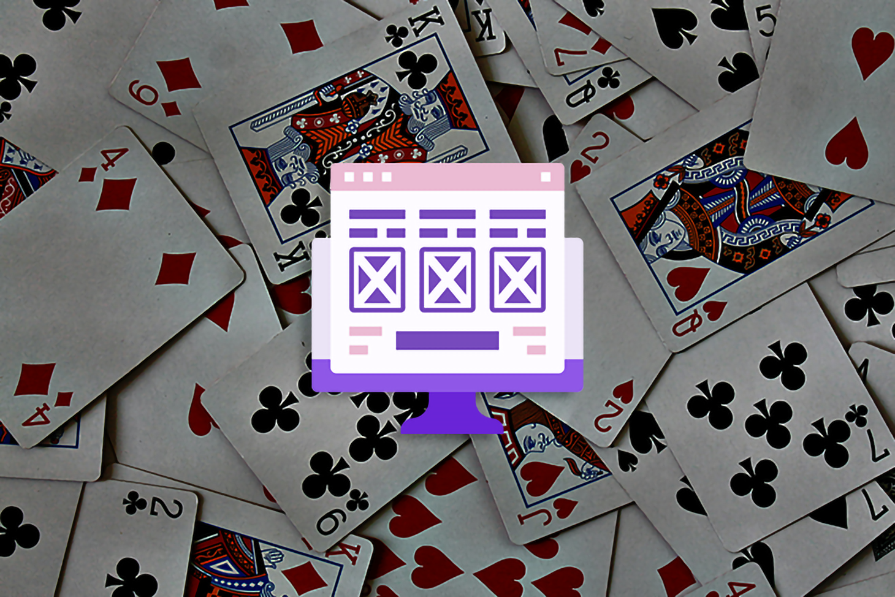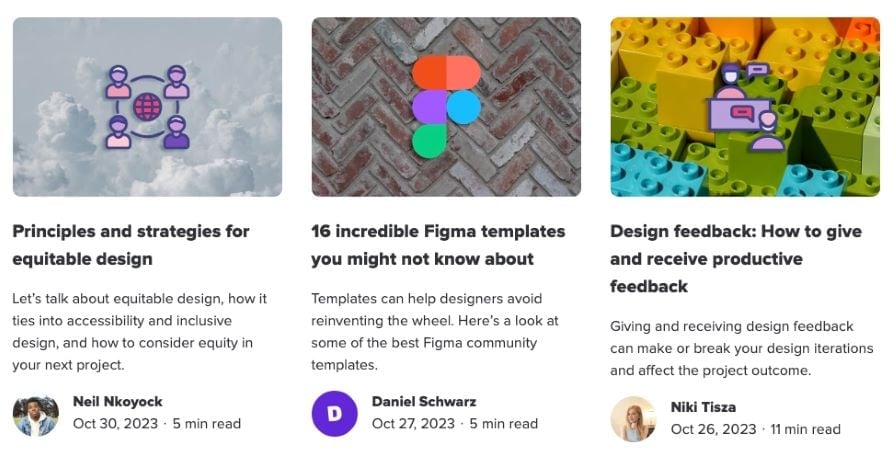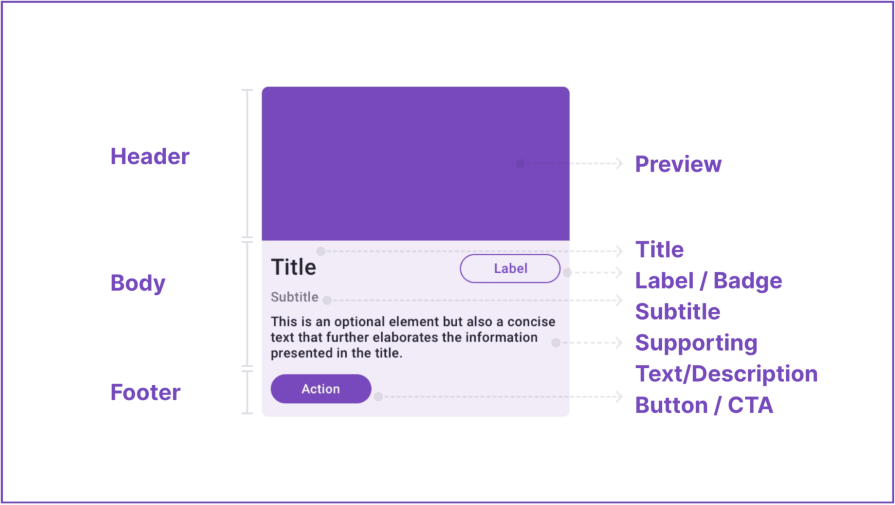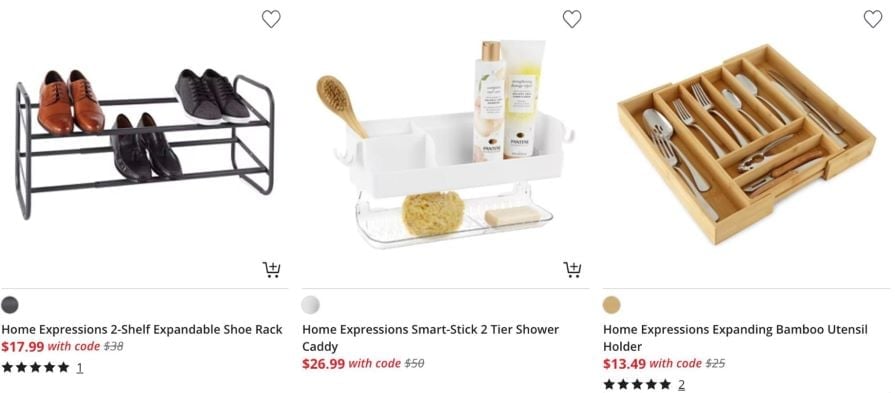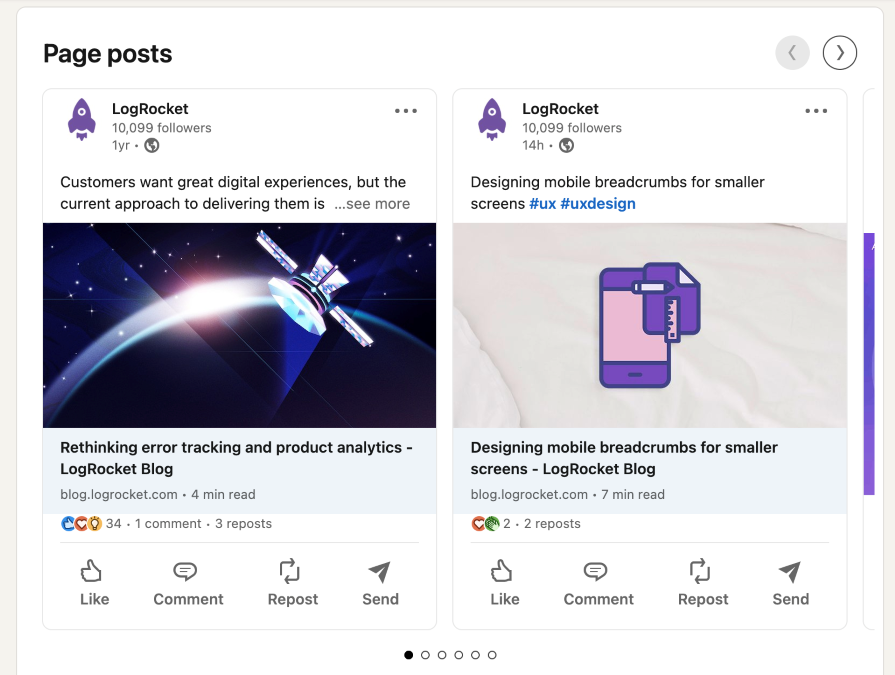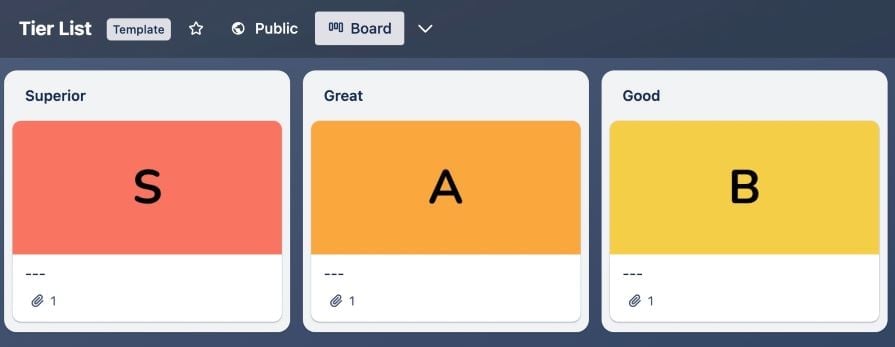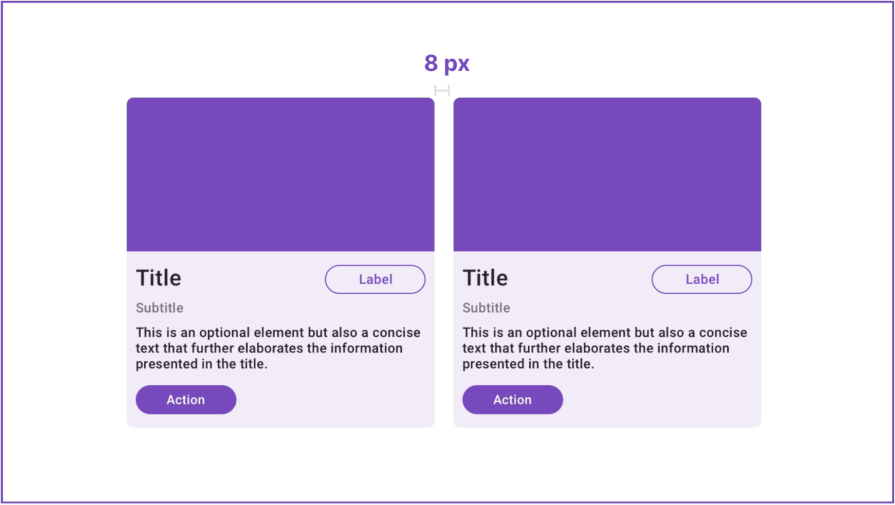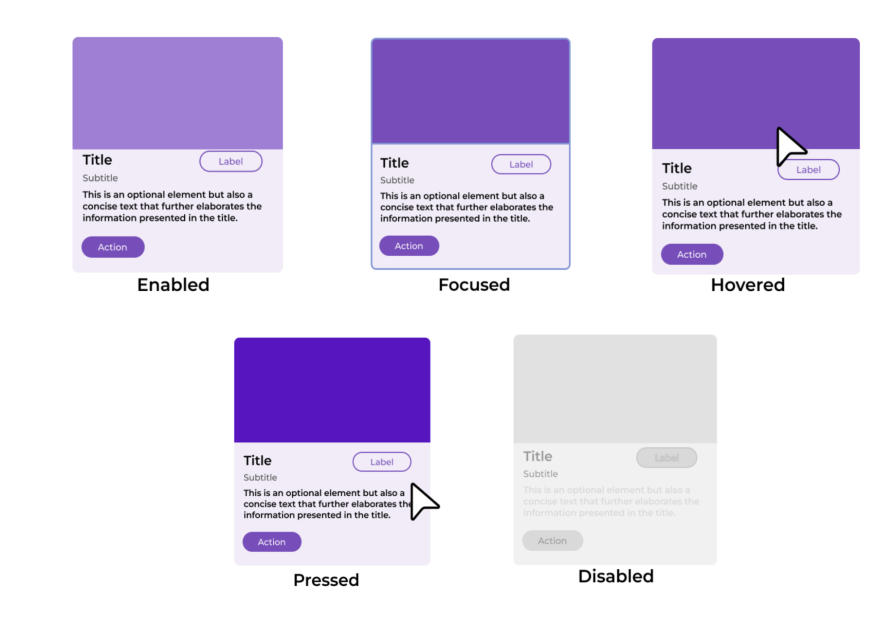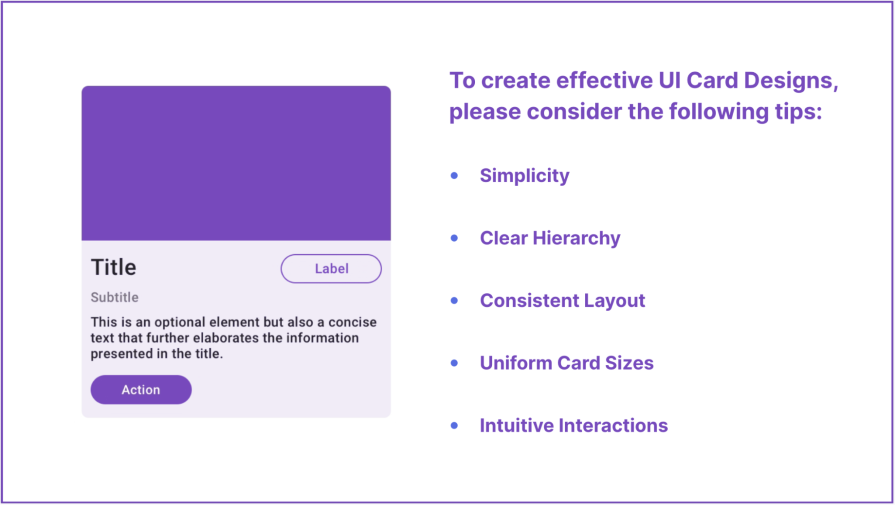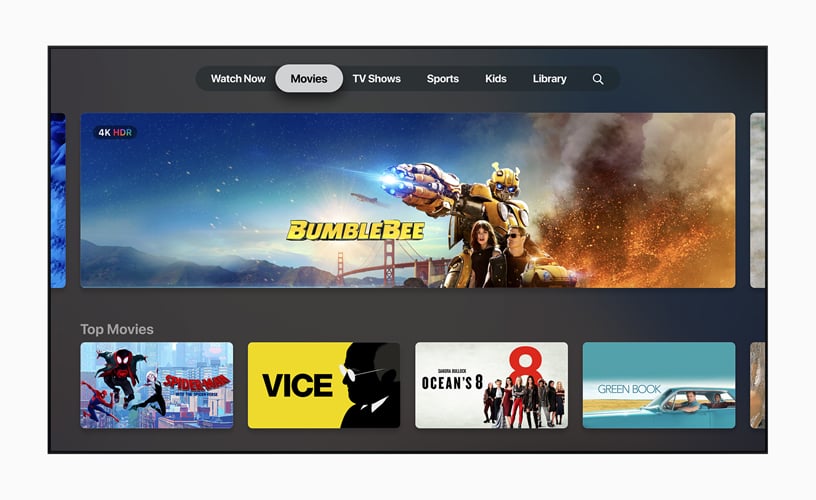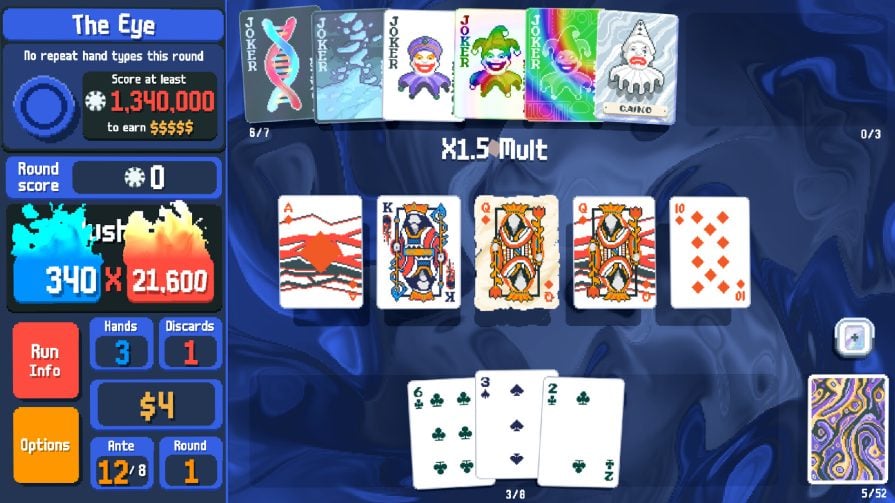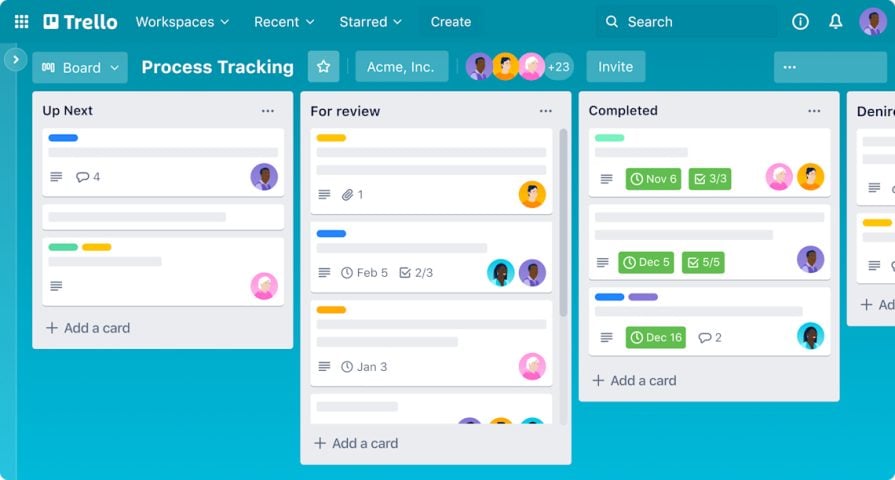Card interface design: Tutorial, examples, and best practices
Designers use cards to spotlight and contextualize information. You can find them in a wide variety of contexts from ecommerce websites, social media platforms, and news/weblogs to dating apps or task management applications. Cards offer content previews, display featured information, related items, navigational options, and so on.
Because of their flexibility, they serve as a go-to method for designers when information needs to be differentiated, organized by relation/sequence, and displayed in a layout or carousel. You might think of them as part of a class of UI menu components that includes lists or tables.
The benefits that cards provide include:
- Enhanced visual appeal
- Improved organization
- Simplified navigation
- Flexibility in content presentation
This article discusses the importance of cards in UI design, the anatomy of cards, best practices for their design and use-cases for their deployment.
Editor’s note: This article was updated by Neel Dozome on 21 April 2025 to expand on best practices, show cards in context, and cover FAQs.
What is a card in UI design?
A card is a UI design component that displays content and actions about a single subject. Designers use cards to organize related information effectively, often linking to other internal pages.
For instance, there are even cards on this blog page. They include pertinent information like post titles, authors, and publish dates:
You’ve probably also seen cards on shopping websites for individual products like Amazon’s cards for grocery services:
The anatomy of a card
Cards are built to be modular and flexible. They consist of three core sections — the header, body, and footer — all within a single container, typically with clearly defined square or rounded edges. The card’s content is organized into these three sections, with the visual emphasis depending on the relevance of each element.
Except for the card’s title, all other elements are optional. This allows for a wide range of possibilities across digital experiences. Each section can contain pre-formatted subcomponents, such as the card’s title, subtitle, text, or other content types, including tables, grids, data visualization, buttons, links, forms, and more:
Header
The card header usually contains media, such as a preview or an image, to give the user a visual cue about the card content. The aspect ratio of this area can range from 4:1 (shortest) to 3:4 (tallest), with recommended default sizes of 2:1, 4:3, and 16:9.
Body
As I mentioned above, cards can have a variety of functions, and you can include basically anything you deem essential. A few common elements you’ll find in the body of a card include:
- Title — Title text often communicates the subject of the card. It should be brief, concise, and straightforward. Cards utilize the heading text style for titles, and the size can be adjusted as needed
- Subtitle — The subtitle is a secondary, smaller text element that serves various functions, such as providing nuanced context or additional information to the users in a card
- Supporting text/description — This is an optional element; it’s a concise text that further elaborates on the information presented in the title. A well-crafted description can enhance understanding and engagement, making it a beneficial component of the overall content
- Labels/badges — These optional elements can be used to indicate the content type or status. They can be arranged in various locations on a standard card. If the card has a preview, it’s best to anchor the badge to the lower right side, overlaid on the preview. If there’s no preview, you can place the badge in the footer on the left. If neither of these options works for your needs, you’re welcome to place the badge anywhere on the card
Footer
The footer can serve as a primary action area for elements like buttons, CTAs, or other controls. If there’s just one action (besides opening or viewing the card), use a button or CTA to communicate that action. You should carefully consider the design and interaction of these elements to offer an intuitive user experience.
A footer is exclusive to standard cards. Otherwise, the card container can function as a clickable card. If a card only allows for viewing or opening in more detail, don’t include buttons or CTAs. A click anywhere on the card should trigger that action.
The benefits of cards
Cards offer a preview of the linked content and can display featured information, related items, navigational options, and so on. Ideally, you should use them in groups to present related information. These are the benefits that cards bring to an app:
- Enhanced visual appeal — Cards provide an appealing way to highlight important information, making it more engaging and attractive to users. They improve accessibility by supplying precise and focused content
- Improved information organization — Cards facilitate the organization and grouping of information, making it easier for users to scan and find relevant content. Cards can be arranged in a grid, a vertical list, or a carousel. Using a single card is generally not recommended
- Simplified navigation — Cards can be clickable elements that lead users to other internal pages. The primary advantage of navigation tools is their additional visual weight as containerized objects on the page. They also accommodate both media and text in order to provide more context where the link leads
- Adaptability — Cards can be responsive and adjust to different screen sizes and devices by rearranging, adding, or subtracting. This flexibility of content presentation and layout design ensures a consistent and optimal user experience across all platforms
When aiming to spotlight information or offer related content, you can think of cards similar to a list or a table component. For example, ecommerce platforms often provide a switch to toggle between a list and a card view.
When to use cards in UI design
You can use cards in UI design for a range of interfaces. These include, but are not limited to:
Ecommerce websites
Cards can be used to clearly and concisely display vital product information, including detailed pricing, visually appealing product images, and straightforward add-to-cart options. This use of cards can significantly enhance the shopping experience for users:
Social media platforms
Cards allow you to fully showcase user profiles. They can also be used to present individual posts, media content, and other interactive elements, all encapsulated in a neat card format:
News or blog websites
Cards provide a way to present headlines and article summaries. Additionally, they can showcase featured images or graphics, giving the user a snapshot of the content before they delve deeper:
Task management applications
Cards can be a tool for efficiently organizing and presenting tasks. They can display relevant information, such as deadlines, priority levels, and task details, in a visually appealing and easily understandable format:
How to design a card UI
Now that you know what cards are and why you would use them, let’s go over how you can design your own card UI:
- Grouping — Try to group cards that display similar content to enhance the user’s understanding and interaction with the content
- Layout — Maintaining alignment is crucial. Consistency in alignment contributes to an organized and visually pleasing interface
- Spacing — Keep sufficient and consistent spacing between each card. This spacing should be both horizontal and vertical to ensure clarity and readability
Let’s pause for an important note about spacing. Cards should typically be spaced apart by a width of some multiple of four pixels, with 8px or 12px being common choices. This practice helps to create a balanced and harmonious layout, making it easier for users to distinguish between cards and ensuring the viewing experience:
Lastly, when designing your card, it’s crucial to include different states to reflect the status of the interactive components. These states are:
- Enabled — Where the component is active and interactive
- Disabled — Indicating the interaction isn’t currently possible
- Hovered — Showing that a cursor is positioned over the component
- Focused — Representing the component is ready for interaction
- Pressed — Occurring when the component has been clicked or touched
Best practices for card layouts in UI design
There are various types of cards, but all card content follows the same general purpose: to set an expectation for what happens when a user interacts with it. When creating effective UI card designs, keep these tips in mind:
Keep card content simple and meaningful
Cards should provide a snapshot of available information, not an overload of unnecessary details. Only communicate what one will find at the card’s destination.
Titles should be short (five to seven words) and focused on the value of interacting with the card. Metadata should be brief (about 10 to 15 words, though it can be longer depending on the complexity of the information), supplementing the title with more in-depth context. Keep button text to one to three words, using a verb phrase to state the action one’s taking.
Establish a clear visual hierarchy
Establishing a clear visual hierarchy within the cards is crucial. You can achieve this through the strategic use of visual cues such as size, color, and typography.
Implementing this visual hierarchy guides the user’s eye and allows them to quickly and efficiently identify the most important information. This can significantly enhance their browsing experience, making the interaction with the cards more intuitive and the information more accessible.
Use a consistent layout
Consistency in the layout across cards is key for a cohesive and familiar user experience. This includes spacing, alignment, and placement of elements.
Cards grouped together should have similar size and content length, controlled by character and word counts. Opt for left alignment to optimize readability and avoid centering text and content.
Keep card sizes proportional
Aim for similar card sizes and content length within groups or carousels. A hybrid approach, such as bento grid designs, can help strike a balance between uniformity and flexibility, allowing the grid to maintain its structural integrity while offering creative freedom.
However, prefer a masonry layout over a uniform grid so that the design doesn’t appear haphazard. Furthermore, avoid extending the button in the same row to match a card of a different length, and do not leave ugly gaps between rows of cards.
Incorporate intuitive interactions
It’s important to incorporate intuitive interactions within the cards. This could include but isn’t limited to swipe gestures, clickable elements, or hover effects. The key intention behind this is to enhance the overall user experience.
Make cards accessible
Ensure sufficient contrast between text and background elements to meet the Web Content Accessibility Guidelines (WCAG). Color shouldn’t be used as the only visual means of conveying information or distinguishing a visual element.
Regular body text should generally be at least 16px (12pt), while large text should be a minimum of 24px (18pt). Larger font sizes improve readability for users with low vision or cognitive disabilities. It’s recommended that text should be scalable up to 200 percent without losing functionality or content.
Users should be able to navigate to a card and the elements within a card using assistive tech. If an image in a card is purely decorative, hide it from screen readers. Labels should have alt-text explanations, as should important images.
Examples of great card interface design
To give you a better idea of how you can create card interfaces, pay attention to how these successful companies used them to help customers:
Apple TV+
One of the more visually ergonomic and aesthetically pleasing deployment of cards can be seen on the Apple TV platform. The cards on the app offer viewing options and information about shows currently available. The design is a discernibly more elevated one than competitors, which is crucial to Apple’s brand identity:
Apple differentiates with the following characteristics:
- Cards are distinguished by their aggressively rounded corners
- Card proportions and variations according to grid math
- Sleek animations (when the cards are interacted with or deployed)
- A pleasing color palette (white, black, greys and blues)
Balatro
Balatro is a hit card-based game app that has surpassed five million downloads. Similar to Duolingo, its game dynamics are heavily rooted in leveraging UI elements. As a card-based game, Balatro is a good example of how UI card components can create interesting and engaging experiences, especially through subtle and fun animations:
Balatro’s UI cards have the following features:
- Colorful and fun
- Simple yet elegant pixel art (especially, the interpretations of traditional card decks)
- Dynamic animations necessary for a gamified experience
- Great integration between text, image and numerical counters (represented through cards)
Trello
Trello is a web-based, kanban-style (meaning signboard or billboard in Japanese), list-making application that’s widely used in the tech industry. Work items are represented visually as cards on a board, allowing team members to see the state of every piece of work at any time. It provides a simple, intuitive, and highly-customizable interface that prioritizes legibility, work flow and collaboration:
Trello’s Card UI is characterized by the following features:
- Cards break up and organize information
- Card animation encourages focus
- Information added to cards fits a pre-existing grid and color system
- Color is used for thematic organization but not as a sole metric for differentiation (encouraging accessibility)
FAQs about card interface design
This section answers the most common questions people ask about card interface design.
What is a card in UI design?
In UI design, a card is a modular design component used to present content in a visually organized and digestible way. Cards are typically rectangular or square containers that group related information into a single unit, often resembling physical cards like business or playing cards. They are widely used in web and mobile interfaces for their simplicity, versatility, and ability to enhance user experience.
How are card elements structured?
The structure of a card is generally described to possess the following anatomy:
- The header (gives the user a visual cue about the card content)
- The body (this area can contain: a title; a subtitle; supporting text/description; and, labels/badges)
- The footer (serves as a primary action area for elements like buttons, CTAs, or other controls)
Some cards just possess a body, where the entire element invites a click, tap or similar interaction. When structuring a card, elements such as visual hierarchy, color contrast, spacing/padding, and alignment are important considerations.
What are the benefits of card layouts in UI design?
Card layouts are a highly effective tool for organizing content in a user-friendly and visually appealing way. In UI design, cards enhance usability, aesthetics, and functionality. The benefits of using this method include:
- Enhanced visual organization
- Quick scanning
- Improved navigation
- Intuitive and familiar design
- Responsiveness and versatility
- Encouraging interactivity
The adaptability and versatility of card layouts make them essential to modern UI design across various industries and platforms.
What are some use cases for card-based user interfaces?
Card-based user interfaces are versatile design patterns that can be applied to various digital products to enhance usability and organization. Here are some examples of key use cases:
- Media and streaming platforms — Cards are used to display shows/movies with titles, screenshot images, or trailer buttons, enabling users to preview and select content easily
- Social media — Platforms like Instagram or BlueSky organize posts as cards, combining visuals, text, and interactive elements (likes, shares, or forwarding) in a quick at-a-glance scannable format
- Online shopping — Product listings cards highlight key details such as images, prices, descriptions, or information to compare items quickly
- Dashboards/analytics data visualization — Tools like Fitbit use cards to present metrics (e.g., sleep or exercise data) or other queries in as charts and graphs simplifying complex information
- Project management — Trello and Asana employ cards in board views to represent tasks, enabling drag-and-drop organization and status tracking
- Educational and learning platforms — Platforms like Skillshare or Domestika use cards to organize courses, teacher profiles, or assignments, making content easily accessible and interactive
- News/blogging websites — News sites like the BBC display headlines, thumbnails, and summaries in cards to encourage exploration without overwhelming users, as well as inform them about the category of news (sports, politics, etc.) that the item belongs to
What are common pitfalls in card design?
Common pitfalls to be avoided in card design are:
- Overloading/cluttering content with bad spacing
- Inconsistent grids or style elements
- Poor color contrast that makes visual differentiation difficult
- Ignoring responsiveness
Additionally, there are certain contexts where cards aren’t the ideal option. For example, data-heavy interfaces are better served with structured tables or lists that handle dense information better. Another example is a linear workflow, such as forms, where a step-by-step process and continuous layout results in a better user journey.
Final thoughts
By adhering to these best practices for card design, you can create interfaces that aren’t only visually appealing but also user-friendly. In doing so, you can ensure that the user effectively presents and comprehends information, enhancing the overall user experience and interaction with the platform.
As mentioned at the very beginning of this blog post, the card design could be modular and flexible. If you would like to learn more about UX design, make sure to come back for our next post. In the meantime, good luck with your cards!
Header image source: IconScout
The post Card interface design: Tutorial, examples, and best practices appeared first on LogRocket Blog.
This post first appeared on Read More


